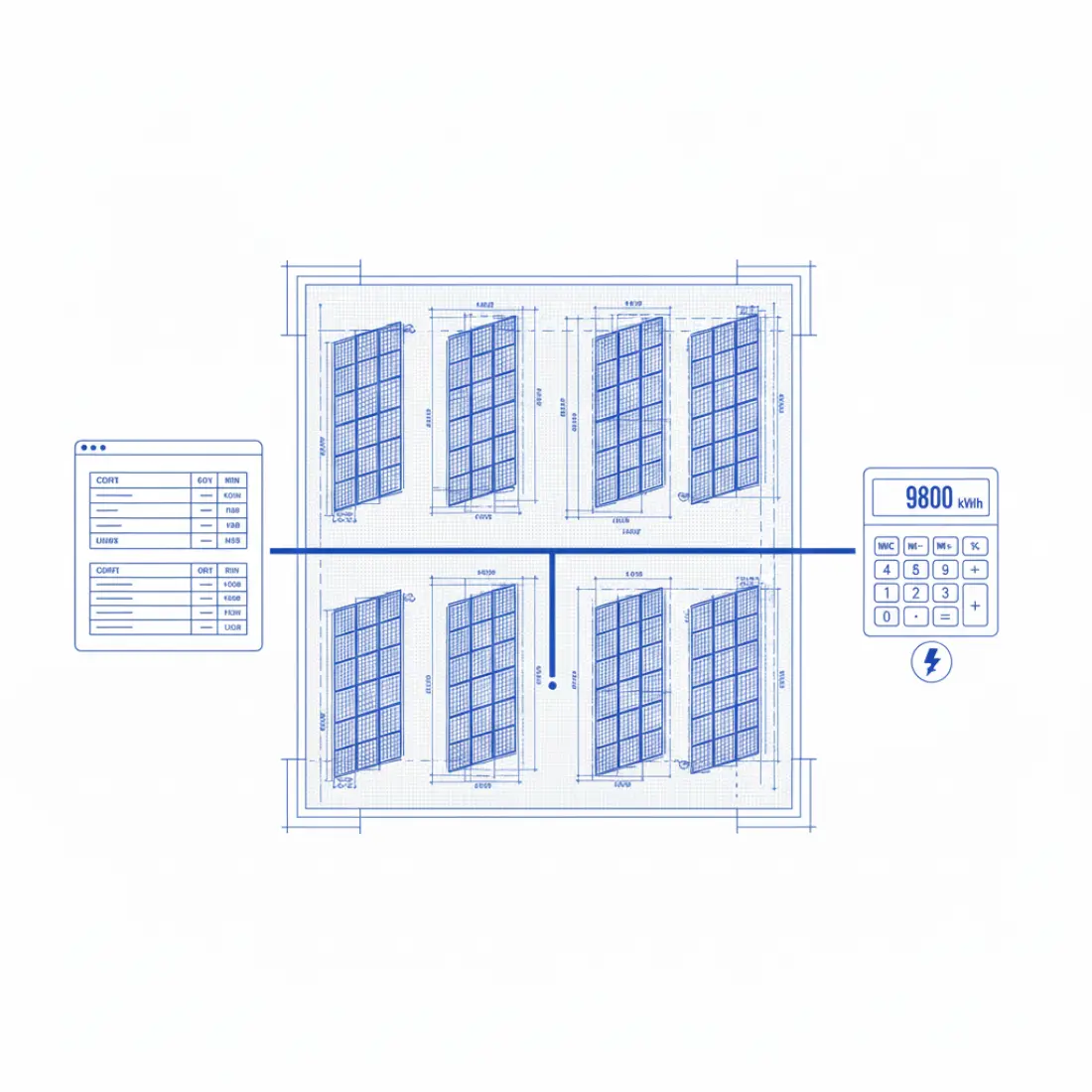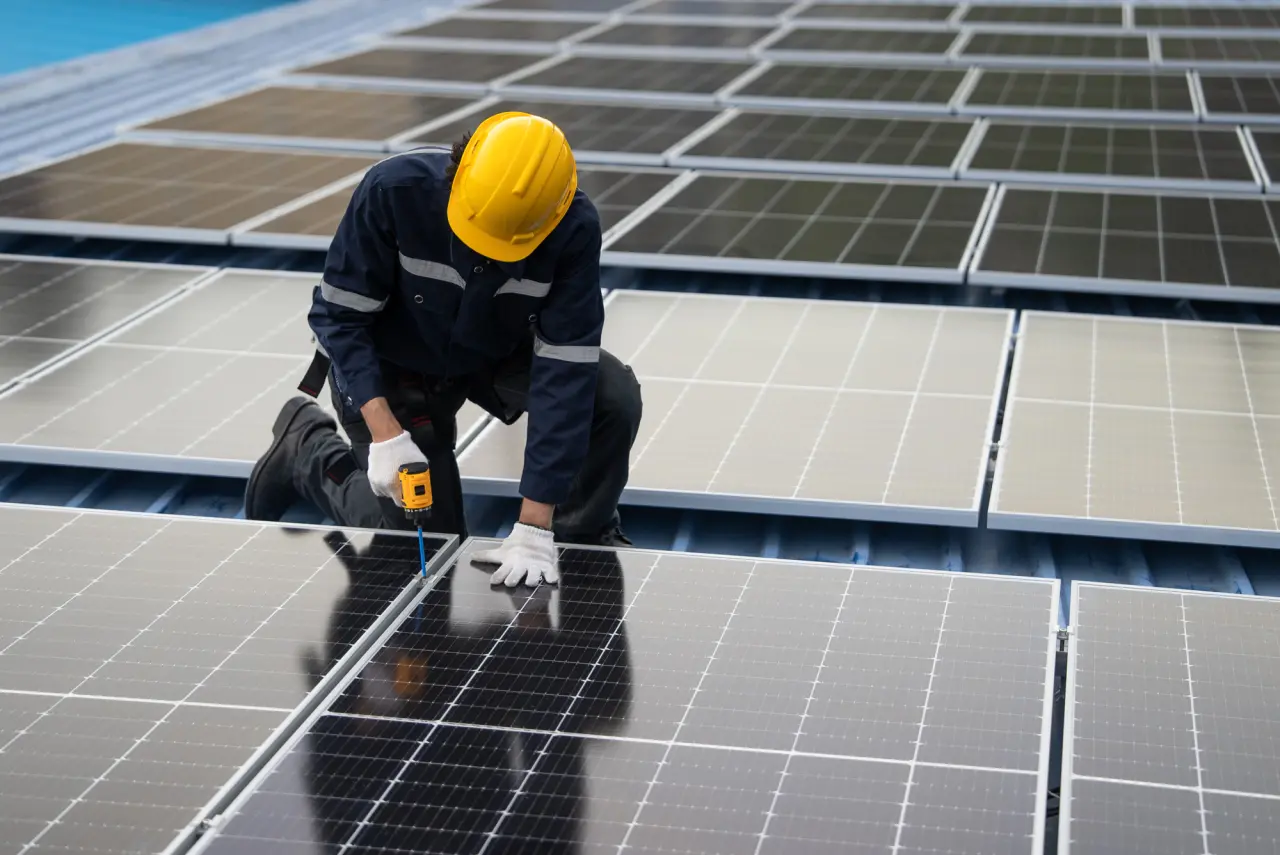How to calculate the size, costs, and power generation of solar power


Solar power systems are a wonderful way to generate clean energy for your home or business. However, you need to make sure you have the right size panels at the right angle to maximize yield and make sure your system is working at its greatest potential.
You also want to balance the amount you put into the project with the return on investment to make sure you don’t waste money. This means there’s a lot to calculate before you can start setting up your system. Use this guide to make sure you maximize your output without wasting money on the project.
Table of contents
- 1. Assessing your energy needs
- 2. Understanding solar irradiance
- 3. Sizing your solar power system
- 4. Estimating power generation
- 5. Calculating costs of solar power system components
- 6. Installation and labor costs
- 7. Maintenance and operational costs
- 8. Estimating payback period and return on investment
- 9. Adjusting for future energy needs
Assessing your energy needs
The first step is to understand the amount of energy you consume each month. You should be able to look at past electricity bills by your utility provider to see how many kilowatts (kW) you use. Try to look at your utility statements across a variety of months to see how your energy usage changes. For example, if you live in Texas, your bills might spike during July and August when you need to run the air conditioning more often.
Evaluating your energy usage will help you choose the right size solar power system for your needs. You won’t overinvest in panels but will still produce enough energy to cover your electric costs each month.
Understanding solar irradiance
Solar irradiance is the power per unit received from the sun. Essentially, it refers to how powerful the sun’s rays are. For example, sitting in the sun can be pleasant on a cool spring day but unbearable in the summer. This reflects how the irradiance changes through the year. Irradiance is also affected by the time of day, peaking around noon or the early afternoon.
Solar irradiance will determine the amount of power your solar panels can generate throughout the day. For example, if you live in Florida, your panels will generate more power than households with solar panels in Maine. This is because the state is closer to the equator and the irradiance is higher, but also because the days are longer.
Understanding irradiance can help you make sure you have enough panels to produce the energy you need throughout the year.
Solar panel efficiency
While you can’t control the sun’s rays, you can make sure you optimize your panels to get the most from them. For example, the direction in which you place your panels and the tilt angle you choose will allow you to maximize your yield by collecting heat from the sun. The ideal tilt angle varies by latitude and season, so adjusting your panels even a few degrees will have a big impact.
Unfortunately, not all panels are adjustable. While you can change the angles on a ground mount system, it is hard to move roof panels unless they are located on a flat surface. A solar installation specialist can help you choose the right tilt angle for fixed, roof-mounted units to ensure you get the most from your investment.
Sizing your solar power system
With your energy needs, solar irradiance, and panel efficiency information in mind, you can start to calculate the number of solar panels you will need. Your goal is to strike a balance between the right number of panels to power your home without overpaying for extra panels that you will also need to install and maintain.
Keep in mind that there might be other restrictions that limit the number of panels that you have. If you want roof-mounted panels but have a small or angular roof, you might only have the space for a few panels to generate power.

Estimating power generation
You don’t need to become a solar panel expert to estimate the power generation potential for your panels. The National Renewable Energy Laboratory (NREL) has a calculator to estimate the performance of your solar installation. You can input your address and the NREL will use existing data to estimate your power generation potential. You can also adjust the information based on the tilt angle, number of panels, and module type. This calculator provides an annual estimate for power generation and a monthly breakdown for you to review.
You can also estimate your power generation potential on your own. You will need to factor in your location — specifically your latitude — and your access to light. Nearby buildings and trees can cast shadows on your panels and limit your overall yield.
Calculating costs of solar power system components
Estimating your yield can be exciting as you develop a solar power system that covers your electricity usage, but you also need to consider your expenses. A few costs to track include the price of the panels, the inverters, batteries, and various other materials that are necessary for installation. These are usually your start-up costs to establish one of these systems, while your output can determine how quickly you get a return on your investment.
Installation and labor costs
Once you calculate your materials, estimate the labor costs that come with your solar panels. Nationally, most homeowners will pay between $251 to $391 per panel for installation. Depending on your installation team, you might save on labor when you buy additional panels.
Installation is often considered a one-time cost. Once your system is set up, it shouldn’t need any major adjustments throughout the year.
Maintenance and operational costs
The materials, installation, and labor are the biggest expenses you can expect when establishing a solar panel system. These are your major costs that will determine whether the project is worth it and how soon you can recoup your costs in the form of energy savings. However, there are ongoing maintenance costs that you will need to factor in.
Ask your solar installation team if they have a maintenance plan to check on your panels each year. You also might want to set aside a small budget for repairs as your system ages.
Estimating payback period and return on investment
Many people want to invest in solar energy because they care about the environment, but there are also real financial benefits to this investment. Once you have a clear picture of your expenses, you can track how long it will take for your investment to pay off.
First, consider your utility savings. You can evaluate how much you stand to save each month — and then annually — with your solar investment. For example, if your solar panels eliminate a $200 per month electric bill, you can $2,400 each year.
Some utility companies also have buyback programs where they pay you for any extra energy you produce. This can hasten your return on investment by making your panels profitable for your home.
Your utility company may offer online calculators you can use to track your solar ROI. This can give you an idea of when the costs you put into the project will pay off.
Adjusting for future energy needs
All of these calculations are useful and can help you make sure your panels provide for your current energy needs. However, you also might want to estimate future costs that could drive up your usage.
For example, if you decide to sell your house, the homeowner after you might use more energy throughout the day. Adding extra panels can accommodate this increased usage in the future. There also might come a time when you use more energy, either because of an exceptionally hot summer or because additional people enter your household — like kids or an aging relative. Investing in a larger system might be more costly, but it could be worth it in the future.
Every property is different. Each household or business comes with its own energy needs and power-generating capabilities. Use these tools to make informed decisions about your panels.


Try PVcase now
See our AutoCAD-based solar design software in action and learn how it can benefit your business. PVcase leverages automation, a high level of precision, and intelligent algorithms to improve the efficiency, accuracy, and quality of PV designs.



